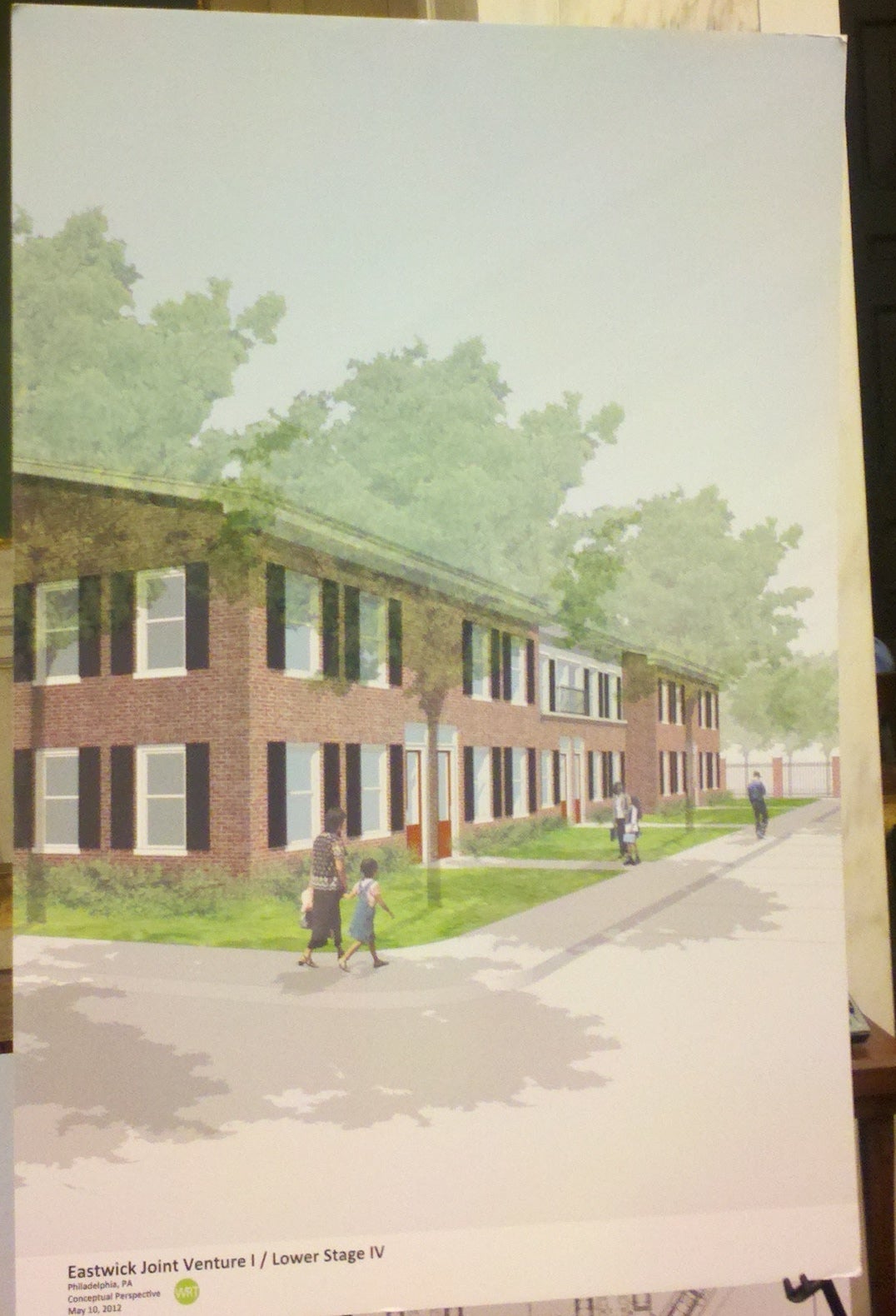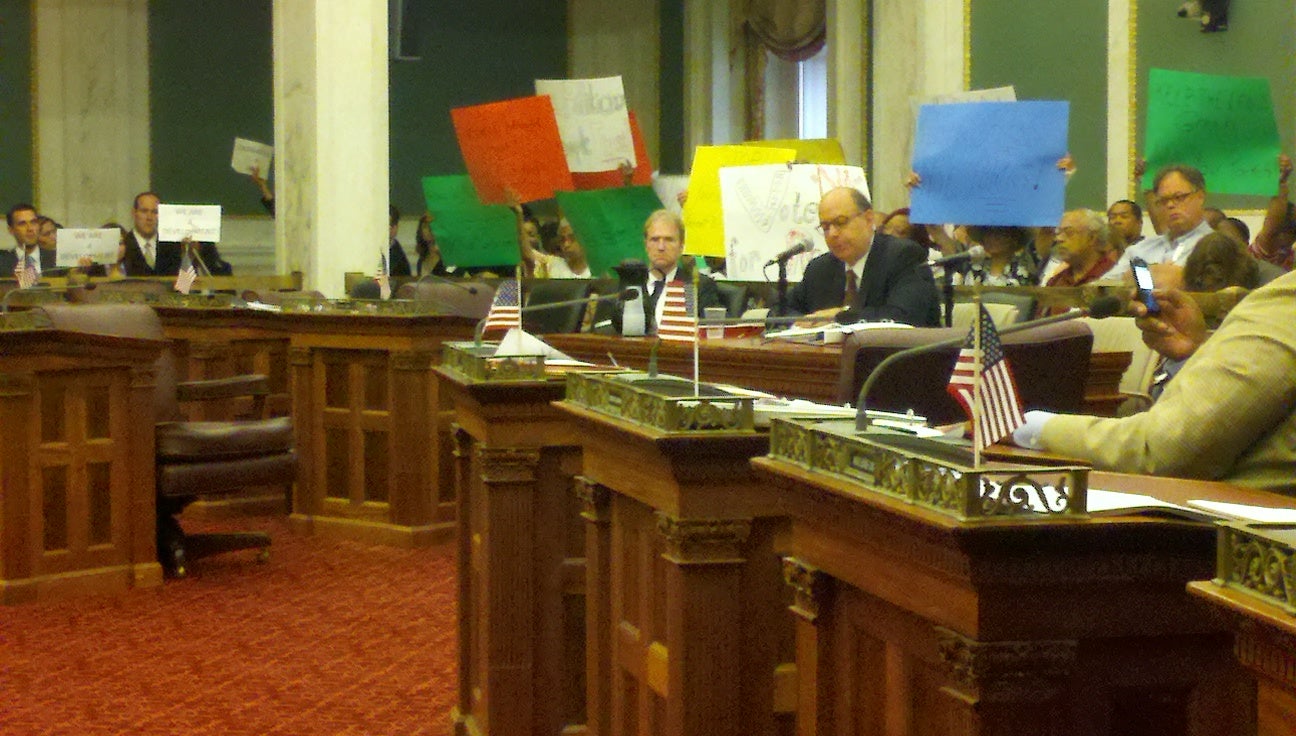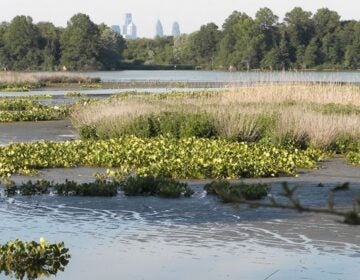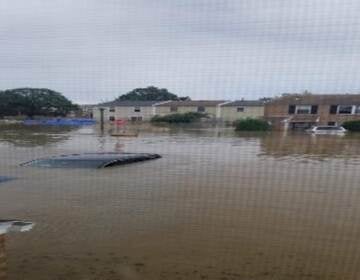Korman not likely to soon get zoning needed for 722 apartment complex near airport, Heinz Refuge
A proposed zoning bill allowing a large multi-family development on 23 acres near the airport and John Heinz Wildlife Refuge was held in committee Tuesday – to the delight of Eastwick and environmental activists, who said it would increase flooding and traffic and harm wildlife, and to the puzzled dismay of developer Korman Residential.
The bill has very little chance of coming up for a vote before Council breaks for the summer later this month, said District 2 Councilman Kenyatta Johnson, who both introduced the bill and, after an off-microphone huddle with other committee members and an in-the-hall discussion with Korman representatives, moved that it be held.
Johnson he was not persuaded to hit the brakes by pleas that the property remain open space for the sake of fauna and tourism, or concerns about flooding. It was the Eastwick residents’ insistence that they were not properly informed of the plans for the area, or given enough time to understand either potential consequences or how those consequences would be avoided.
Councilman Johnson on his decision to hold the bill in committee
“For me, it was not about this parcel of land, but making sure the community residents have all the information,” Johnson said.
“I still think it’s a good project,” he said of Korman’s plans to build 722 apartments that would bring about 1,000 residents to the area, and, according to the testimony of Senior Deputy Director of Commerce Duane Bumb, would fill a need for rental housing, bring needed tax revenue to the city, and bring more customers to Eastwick’s commercial district.
It wasn’t concerns about Heinz Refuge or neighborhood flooding that angered Councilman-At-Large James Kenney, either. It was his discovery, late in the hearing, that the zoning bill was related to a settlement to a lawsuit filed by Korman over the amount of money the city paid to condemn another parcel of land for airport use as an employee parking lot and a transfer of 93 additional acres from the RDA to the airport. The Heinz Refuge and neighborhood activists are also opposed to the land transfer for the same flooding and environmental reasons.
When Kenney demanded someone from the airport explain what all of this was about, city attorney Sara Kalb, who works for the department of aviation, said the city paid about $4 million to Korman after condemning the land for the parking lot. Korman sued the city, she said, saying the development value of the land was more like $23 million. The issue went before the Tax Board of Review, a city board that assesses property values, which determined the value was $13.5 million.
The settlement calls for the city to pay Korman the $9.5 million difference, and for Korman to drop its lawsuit and relinquish its development right on the acres that the RDA would transfer to the airport, Kalb said.
“Is the resolution of the litigation related to the passage of this (rezoning) bill?” Kenney asked.
“Yes,” Kalb said.
She said that Johnson “Has been fully briefed on all the details.”
“The community wasn’t,” someone yelled.
“It’s unbelievable,” said a visibly angry Kenney under his breath. Into the microphone, he said: “I don’t like the linkage, and I don’t like not being told about the linkage, so I don’t know if I’m going to be able to help you out on this.”
At first, Johnson said he was going to propose amendments to his bill, which would change the zoning from single family to multil-family residential. Then he asked for a moment, and conferred with staff and other council people at his desk. Then he went out into the hall. Upon his return, he made the motion to hold the bill.
The opponents who had crowded the room cheered.
“It’s a big concern,” Korman Residential’s John Korman said after the vote. He also said he was surprised.
“We don’t know the consequences yet ourselves,” said Korman attorney Peter Kelsen. “It’s very disappointing.”
Testimony of the Korman team. Korman says the plan would help fulfill long-standing development plans for the area, bring construction jobs now, and bring new residents, tax revenue and an economic engine for other businesses, old and new, in the future.
Korman’s agreement has been amended five times since 1961, said PRA spokesman Paul Chrystie. Two of those amendments were “very minor,” he said, while three “included land swaps and deadline extensions.” The current agreement ends in 2015.
Korman did not make a one-time payment for development rights, Chrystie said, but has purchased land as needed for development.
Kenney said after the vote that he’s incredulous the city would pay a developer big money to free city-owned land from a developer who has held rights to build on the land for decades without building. “It’s all land speculation, and the really crazy thing is they are speculating using our own land,” he said.
He said he absolutely believes the zoning change was promised to the company in exchange for “getting out of the way.”
Chrystie said the land transfer to the airport was not part of the settlement. “It is speculative as to whether the land swap would have happened without the lawsuit, but the lawsuit ended up being a convenient procedural vehicle through which the land swap issues could be resolved.”
When PlanPhilly asked John Korman a question about the airport land swap, Kelsen signaled he shouldn’t answer. “We’re not going there,” Kelsen said.
The land transfer will be considered at a 10 a.m. city council land use committee hearing Wednesday.
Kenney was not sympathetic to Heinz manager Gary Stolz’s assertion that the land under consideration for both the apartments and the airport would do more people more long-term good if it were protected as part of the preserve.
The preserve was established 30 years ago this month, and the land has been vacant all that time, he said. “Why hasn’t the Department of the Interior bought the damn land?” he asked. “I don’t want the U.S. government blaming me for something they didn’t do anything about.”
Stolz said the federal budget is not unlimited, and it’s usually been citizens who have raised money for land purchases.
Korman said he was also surprised by some of the comments made by some Eastwick residents, because he is, and always has been, committed to working with both the residents and the refuge.
But while Kelsen said Korman has been reaching out to residents, residents said they had no idea anything was happening until surveyors showed up and they called Korman. There have been several meetings between Korman and the community, including one large gathering at the end of May.
Officials from Korman have been working with Heinz officials and the Friends of Heinz advocacy group to address concerns. Kelsen told the committee that Korman is committed to creating a visual buffer between the development and the refuge. Without one, the proposed complex could be visible from the Heinz visitor center when deciduous trees are not in leaf.
Korman will also allow a footpath between the Eastwick SEPTA station and the refuge, Kelsen said.
And due to the sheer size of the development, Korman will have to work with the Philadelphia Water Department on its plan. Kelsen said the water department requires that current run-off conditions be improved, so the development will not exacerbate flooding problems.
Kelsen told committee members that the developer will have to improve water drainage, and so there will be no increase in flooding.
Residents and other advocates said that’s impossible.
Joanne Graham said she’s lived in the neighborhood for 24 years, has a Korman single-family home, and never had a flooding problem until March 2008. Since then, she’s claimed $62,000 in damages from her insurance company and spent another $20,000 of her own money on flood damage or control. Her home now has foundation cracks that she attributed to sinking. More concrete will equal more runoff, and more problems for herself or other residents, she said. “I’m a slave to my home,” she said. “I can’t sell it if I wanted to.”
Some of the testimony given by residents and other opponents, who said the development would harm the Heinz Refuge and exacerbate flooding.
After questioning a water department representative, Councilwoman-At-Large Blondell Reynolds Brown suggested the department re-arrange its priority projects to provide flooding relief sooner to the residents of Eastwick. Maybe if residents saw that current conditions were being improved, they would not be so angry about more proposed development, she said.
If Council eventually passes all the bills Korman needs, the developer still has work to do before construction can start. Because the land is owned by the PRA, an amended plan of development would have to be approved by that quasi-city agency and the city planning commission. In addition to working with the water department on water management issues, Korman may have to do environmental testing on the fill to see if remediation is needed to make it safe for residential use.
During testimony, Kelsen said Korman hoped to begin construction next year.
Reach the reporter at kgates@planphilly.com
WHYY is your source for fact-based, in-depth journalism and information. As a nonprofit organization, we rely on financial support from readers like you. Please give today.








